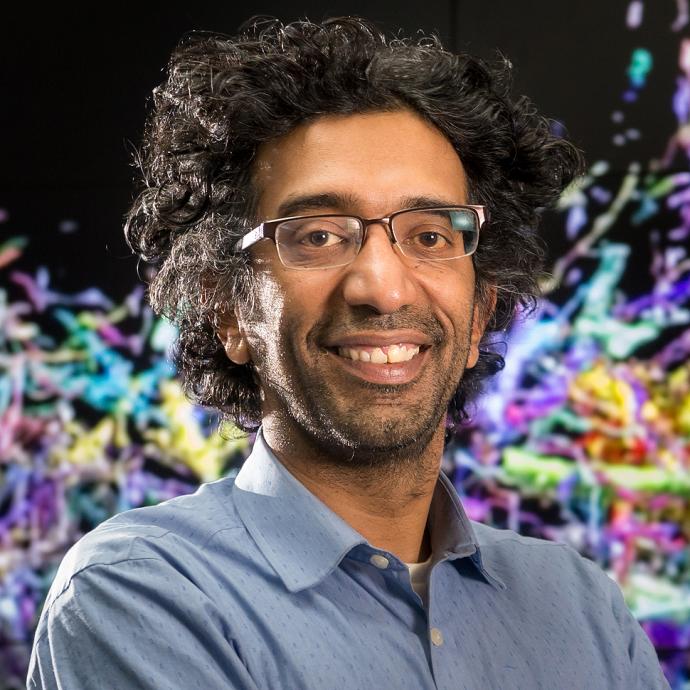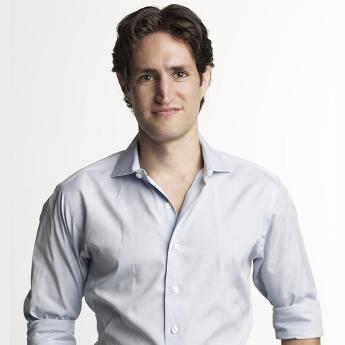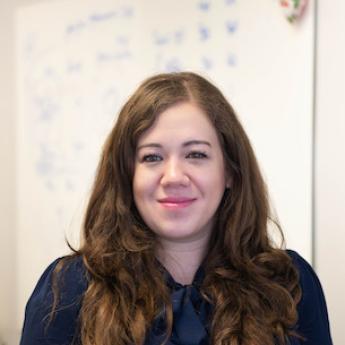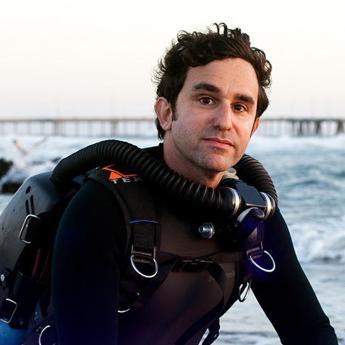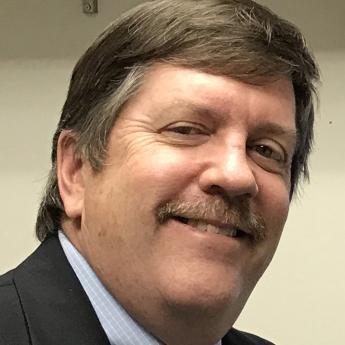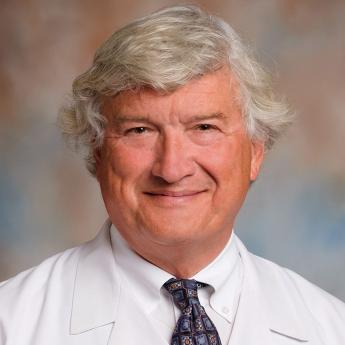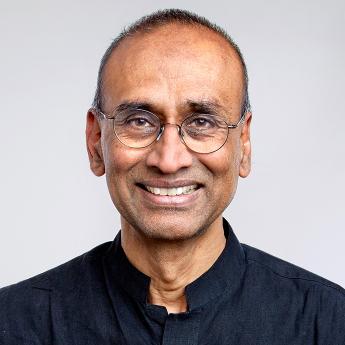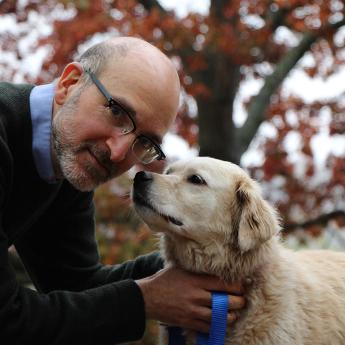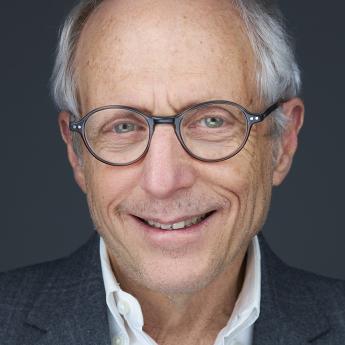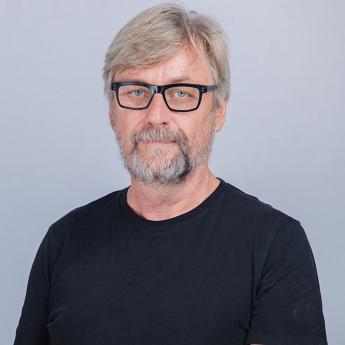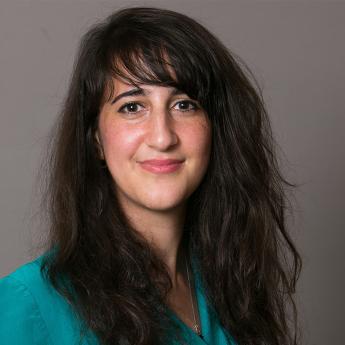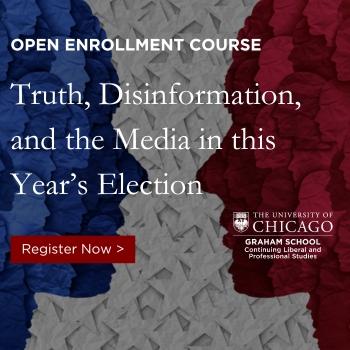Show Notes
Neuroscientist Bobby Kasthuri wants to do the near impossible: Map the entire human brain.
That means identifying each of the trillions of neural connections that exist inside the mind—a number bigger than the stars in the Milky Way galaxy. His success could mean understanding ourselves unlike ever before.
“I want to turn anatomy of the structure of the brain into what we did for the genome,” Kasthuri said. A scientist at the University of Chicago and Argonne National Laboratory, he believes a map of neurons could tell us everything that makes a human being unique—from an individual’s memories and dreams, to a more intricate understanding of mental illness.
On this episode of Big Brains, Kasthuri explains how high-powered microscopes and supercomputers help him study the brains of mice, what makes humans distinct from all other living creatures and why the term “dim bulb” is more accurate you think.
Subscribe to Big Brains on Apple Podcasts, Stitcher and Spotify, and rate and review the podcast.
Recommended:
- Neuroscientist leads unprecedented research to map billions of brain cells
- New Brain Initiative Aims to Fully Map the Human Brain—Chicago Tonight
- Neuroscientist Explains One Concept in 5 Levels of Difficulty—Wired
- Supercomputing Is Allowing Us to Map Brain Function at the Deepest Levels—Futurism
Transcript
PAUL RAND: As you’ll hear, I had a lot of fun recording this episode with neuroscientist Bobby Kasthuri. Bobby’s working on some pretty astounding stuff in an effort to map the human brain. There are trillions of neural connections in the brain, and Bobby believes that all together they make up everything that makes us human. To map all those brain cells is a harder task than counting all the stars in our galaxy, not that Bobby isn’t going to try.
RAND: Don’t forget to rate and review Big Brains on Apple Podcasts, or wherever you listen to the show.
RAND: All right, well, Bobby, I have to tell you, I’ve been a little nervous about having you come in. The name of this podcast is Big Brains.
BOBBY KASTHURI: OK.
RAND And I was kind of terrified you were going to say, well, that’s a really stupid name, because big brains don’t equal more intelligence, because here I am talking to a foremost neuroscientist and brain expert. So I, guess tell me maybe right up front, does big brains equal more intelligence?
KASTHURI: Actually, it’s an interesting point, because I’m interested in this idea of size and intelligence. And in general, when you think about animals that are smart, humans, whales, dolphins, elephants, they all have big brains, but a better measure is the ratio of the size of your brain to the size of your body.
RAND: Ah.
KASTHURI: And when you use measures like that, then things like whales and elephants, which normally just by absolute size would be smarter than us, kind of scale more closely to us.
RAND: But big brains can indicate, if there’s proportionally more intelligence. So the podcast actually, is appropriately named. All right, so I’m going to back up now that I feel relieved that my name of the podcast is not completely wrong.
KASTHURI: Big relative brains.
RAND: Big relative brains, a little long. So let’s talk about how you got to the University. How would you describe what you do now?
KASTHURI: I guess one way to describe it is we are anatomy on steroids.
RAND: OK.
KASTHURI: There has always been a place for figuring out the structure of the brain. What does the brain look like at various scales, at the whole brain scale, at the single cell or neuron scale? KASTURHI: But it was always done in a kind of like cottage industry fashion. We have a little lab. I do my little part of it. Someone else does another little part of it. I want to do that at industrial scale. I want to turn anatomy of the structure of the brain into what we did for the genome, which is we collect these enormous data sets that most people can’t access and then distribute them widely to the community.
KASTHURI: We generally talk about three things when we think about if we had a full map of a brain.
RAND: Clarify this. When you say a map of the brain, what does that literally mean?
KASTHURI: Yeah, so for about 100 years now, neuroscientists know that your brain it isn’t made up of a little person inside of you. For a long time, there was this theory, it was called the homunculus. And it was this idea that there was a little person sitting inside your head, who also had eyes and arms and legs, etc. And as they move their arms and legs, your arms and legs moved. It was an instantiation of you.
KASTHURI: But over time, we realized that the only thing that’s in there are cells. There’s nothing magical or human, like you inside of it. And in fact, we think that in a human brain there’s 100 billion brain cells, or neurons. And the special thing about neurons that’s different than any other cell in your body, a stomach cell, a skin cell, is that neurons make long connections, processes that connect with each other.
KASTHURI: On average, in a human each neuron makes 10,000 connections. So if you take the number 10,000 and you multiply it by the number 100 billion, you get an even bigger number, that’s something like a quadrillion or whatever.
RAND: Yeah.
KASTHURI: I don’t actually know what that number means, but one way to think about it is there are more connections between neurons than there are stars in the Milky Way galaxy. And I want to map every one of those.
RAND: And the purpose of mapping that means you’ll be able to trace start, finish, links, everything else.
KASTHURI: Correct.
RAND: And to what benefit?
KASTHURI: At a very high level, the strong hypothesis in neuroscience is that that map of connections is everything about you. Like, if we could decipher that map, and we should talk about how one would decipher that map, but for now, let’s just say we could decipher that map, that map would have every memory you’ve ever had. It would have every one of your hopes, your dreams, your skills, your fears. Everything about you is stored in that map. Now, that’s at a very high level, but what could we do if we had a map like that?
KASTHURI: I would say the first thing we could do is—and you and the audience might hear—every day, we hear about how machine learning or artificial intelligence algorithms do something better than a human being does. Now an artificial algorithm can beat a human in chess. An artificial algorithm can beat a human in Go. I recently learned that an artificial algorithm can now beat humans in poker. That last one bothers me, because that involves deceit and bluffing, and etc.
RAND: Yeah.
KASTHURI: And those algorithms are better than us at that. Right? But the thing none of them can do, which our brains do all the time, is that in addition to playing a game, our brain knows how to move my body, sit down at that table, recognize the chess board, and move my arms with skill and grace that no algorithm can currently do. So if we had a map of the brain, I’m hoping we can reverse engineer many of these human qualities, creativity, empathy, sense of humor, that ultimately, there’s going to be a physical basis for that. And if we know that physical basis, we can reverse engineer it.
KASTHURI: So soon our algorithms and our robots will do the same things.
RAND: So let’s talk about both sides of the coin of being able to do what you’re talking about doing.
KASTHURI: Please.
RAND: There’s a terrifying side--
KASTHURI: Absolutely.
RAND: Arguably, to what you’re talking about doing. And then there’s hopefully a positive side. Let’s start with the positive side.
KASTHURI: So maybe we won’t agree if a robot has a sense of humor. I think that’s a positive side, in and of itself, but the other thing that I tell people is that your brain, everyone’s brain, Einstein’s brain, Mozart’s brain, they all operate on 20 watts of energy. And these light bulbs in this room are probably 60 watts of energy. So although you may consider a lot of humans dim bulbs, they are in the sense that they can perform tasks at energy levels that we can’t comprehend for any of our algorithms. And because half the time I’m at Argonne, which is a Department of Energy lab, I’ve learned that by 2025, by 2030, the single largest growing fraction of our energy budget is not the oil that we put in our cars or in our airplanes. It’s uploading and downloading pictures to the internet.
KASTHURI: And by that time, just moving information and the amount of information that we move is going to be the single largest part of our energy budget.
RAND: My gosh.
KASTHURI: And so if we understand how a brain can move information and do calculations for 20 watts of energy, that could significantly help us in our energy crises—
RAND: That is a very unexpected answer, but a very interesting one.
KASTHURI: Another one is that for many psychiatric and mental illnesses, we don’t even know where the illness occurs. We don’t know, although, we think that many illnesses like autism or schizophrenia are missed connections, neurons that are connecting with inappropriate neurons, we have no idea where to start.
KASTHURI: And if we had a map of that brain and compared it to a map of a schizophrenic brain, we’d start to understand what the physical basis of these mental illnesses are. And the belief is that once we understand the physical basis of these mental illnesses, we’ll be able to treat them in a more rational fashion.
RAND: So those are some wonderful upsides on the side there. But even as you were talking and making the joke about the game theory and the poker playing, you start linking into things that could be a downside. And if there’s fears about artificial intelligence, those fears could go into overdrive for some of the stuff that you’re talking about.
RAND: What do you do about that?
KASTHURI: Nothing. (laughing)
RAND: OK, that’s for somebody else to worry about.
KASTHURI: A great physicist that I sometimes think about, his name was Robert Oppenheimer, and he’s often called the father of the atomic bomb. And when they interviewed him and they asked him and they say, you realize that you care fundamentally about how the nucleus works, et cetera, but you realize that that kind of science can have applications for making bombs, destroying cities, etc.
KASTHURI: And he says, I can’t help myself. I need to be able to know how the nucleus works. And if society takes my applications and applies it however it wants, there’s nothing I could do about that. And I feel like—
RAND: It’s going to happen at some point.
KASTHURI: And the one thing I can’t seem to give up is my curiosity about how the brain works.
[ADVERTISEMENT]
RAND: You are pretty keen ultimately, on trying to map a mouse brain.
KASTHURI: The goal itself is data. The constraint is data. So a fly brain, which is somewhere in between the original worm brain that was done I think in the middle 80s or the early 90s and the mouse brain that we want to do, and ultimately, the human one, because there are, as I said, a quadrillion connections in your brain, the only way to make sure you capture every one of those connections is to image the brain at very fine resolution, a very high spatial resolution. Meaning, when we take pictures of the brain—
RAND: And you slice it very thinly. Is that right?
KASTHURI: Correct. It turns out that there are so many connections in your brain, each of them is unbelievably small. In fact, they are so small, they’re smaller than the wavelength of light, of the light that you use in most microscopes. The connection is actually smaller than light. So we can’t use light microscopes to map the brain. The only kind of microscopy you can use is something called electron microscopes. So the only way to do electron microscopy is to make really thin slices, physical thin slices, of a brain, any organ, and use an electron microscope to take a picture of each of those slices, physical slices, and put it all back together inside a computer.
KASTHURI: We probably do thousands and thousands of slices. And we take a picture of each slice.
KASTHURI: The reason we have to do that is that there’s so much material packed into there, our microscope has to be able to resolve things that are the difference between atoms, hundreds of atoms, at the nano scale, what we call nano meter range, is the resolution we need to apply over the entire brain.
KASTHURI: Now, if you need nanometer resolution over a brain that’s one centimeter, you soon start to collect enormous amounts of data. And so the reason, a lot of the reason that this couldn’t happen before is that the mouse brain, the thing that I want to do, and I have to remember this every time, is not a million gigabytes of data, not a billion gigabytes of data. It’s a trillion gigabytes of data to do an entire mouse brain, where I get every connection between every neuron, is going to require a trillion gigabytes of data.
KASTHURI: To give you an idea of how big that is, if you took all the written material in the Library of Congress and to a first approximation let’s just say that’s all of human knowledge. Right? That is not even 1% of the data that we’d like to collect.
RAND: Got it.
KASTHURI: If you added all the audio that had ever been recorded and put into the Library of Congress, every movie from black and white to 3D today, you still wouldn’t get to probably 20% of the data for an entire mouse brain.
RAND: My goodness.
KASTHURI: So the main constraint is it will be a data set collected about a single thing bigger than any data has ever been collected in the history of humanity.
KASTHURI: And the point of then being able to have the ability to collect the data, store the data, manipulate the data, really starts becoming the biggest task of all.
KASTHURI: It has, I think for the last five to 10 years, actually been the largest problem, but like most obvious problems, it takes a long time for people to recognize it.
KASTHURI: But now it’s beginning, and it is clear, not just the work we do, but in almost all fields of neuroscience, people are collecting more data than they know what to do with.
RAND: I mean, are there 100 people around the world trying to do what you’re doing? Is it collaborative? Is it competitive?
KASTHURI: It’s a little-- it’s everything.
RAND: It’s all those things.
KASTHURI: It’s, you know, humans working with humans.
RAND: Right.
KASTHURI: Which entails all of the things that happen when humans work with humans, but I would say the number is not 100. It’s closer to five, four or five groups. I would say in the United States there are about three or four groups that are targeting. There’s one place called Janelia that’s targeting the fly brain. There’s Allen, which is targeting a smaller part of the mouse brain. There’s us and probably Carver. Worldwide, there’s a couple of Max Planck Institutes. These are the sort of large, premier scientific institutes in Germany that are also participating.
RAND: If we think through what the ultimate goal of this entire project might be, what do you think it is? And how long do you project it would take to get there?
KASTHURI: Yeah, I mean, let me pick one, the one that I’m most interested in, which is what does it mean to be a human? What is so special about a human brain that’s different than a primate brain, than a mouse brain, than a fly brain? And to first approximation they’re all the same. The genes that a mouse neuron expresses are very similar to the genes that a human neuron expresses.
RAND: OK.
KASTHURI: The channels that led in the ions to do the electrical activity in a mouse neuron, are pretty similar to the channels that led in the ions to do the electrical activity of a human brain. Right? So we think since there’s no difference in kind, the neurons are all the same, neuron is a neuron, is a neuron, it must be the map of neurons, the actual connection map, that’s the difference between those two.
KASTHURI: Now, I’m not sure that requires an entire mouse brain to be compared to an entire human brain to get that answer. So I actually know, I think, what the difference is between a human brain and a primate brain and a mouse brain.
KASTHURI: The main difference is that-- and I have two kids and I hope they’re not listening-- the main difference is that humans are born completely useless. When you bring home your baby for the first time, you realize that without you, that baby dies.
RAND: Right.
KASTHURI: That baby literally knows nothing. Right? And that is uniquely different than any other animal born. Most animals born have a set of behavioral repertoires. A fly born knows how to fly, which is actually a pretty amazing thing to solve in 3D space, if you can. And what’s fascinating about humans is that we’re born completely useless. But the same human, my children, learn a set of skills that can’t be in their genomes. There is no gene for using the iPad. There is no gene-- in fact, there’s probably not even genes for reading, because the printing press was only invented a couple of hundred years ago.
KASTHURI: So what I think is interesting about humans is that we’re born useless, but have a capacity to learn new things that no other brain has. The other way I give this argument and it’s clear, I’m so much smarter than my daughter. I know how to drive a car. I know how to do taxes, grocery shop. There’s a set of skills that I have that she clearly doesn’t have. So almost any test, if you didn’t know who we were, you’d say this unknown person is way smarter than this unknown person. Right?
KASTHURI: But there is one way where she dominates me. And this is the thought experiment, which is that if you took us and you put us down in any location in the world, in the history of the world, and you came back 20 years later and said, who’s assimilated better? I guarantee my daughter, other than skin color differences or hair color differences, will be indistinguishable from the population that you put her down in.
KASTHURI: I’ll either be dead or still stick out like a sore thumb. Right?
RAND: She’s learned.
KASTHURI: Human brains are born in this kind of tabula rasa blank state condition and have a capacity to learn, that other animals don’t. And that’s the kind of physical basis that I’m interested in trying to figure out.
[ADVERTISEMENT]
RAND: Let’s talk about how you got to the University.
KASTHURI: When I was in college, I was really interested in being a doctor. That was partly me being interested and my parents making sure I was interested in being a doctor. And when I got to medical school, the field that fascinated me the most was psychiatry, psychiatry and neurology, things that have to do with the brain.
KASTHURI: Like most students, I was interested in helping people, saving the world, et cetera. And when I got there, I realized, you know, despite the fact that many psychiatrists, neurologists they’re brilliant, off the charts brilliant, the fields themselves are like the wild, wild west. The therapies that we use on people for psychiatric illnesses, they’re never thought out a top down kind of therapy. In fact, there are often drugs that we use for other diseases that we try for these diseases. We get some success. And then we make that standard of care.
KASTHURI: I was really disappointed with how we treated psychiatric illness and mental illness. And I realized the patients had a little contribution to this too. I realized that the thing that I could do the best was not continue the same vein of sort of ad hoc therapy, but try to figure out something about the brain that would ultimately help us understand mental illness.
RAND: So that was a pretty big switch for you.
KASTHURI: You know, I didn’t enjoy medical school as much as I thought I would. I thought it would be like House. You show up and you’re just solving intellectual problem after intellectual problem. Turns out that’s not what the majority of medicine is anymore. And so it was a switch, but I think it was always here.
RAND: Let’s talk about then why you’re at Argonne, and the choice to be there, along with being at the University of Chicago.
KASTHURI: So Argonne is one of these national labs that is funded by the Department of Energy. They have currently—I can’t remember the rankings—but the fourth largest, strongest, handsomest computer in the world. And they’re one of the few places—there is very few academic centers, academic universities in the world, where as a young scientist you could show up and say, listen, I’d like to collect a trillion gigabytes of data. I don’t really have any money for the computers. Maybe you guys could help out.
KASTHURI: I couldn’t find a bunch of places that said yes to that, but when I showed up at Argonne they said, yeah, we can do this.
RAND: That seems cool.
RAND: That’s great. Now, you had thought if you could obtain $15 million-- was that the number?
KASTHURI: That you could get this done in a year and a half.
RAND: Is that still—
KASTHURI: Yeah, I mean, since we’re on the record, let’s make it 25, just in case.
KASTHURI: But yeah, on that order of magnitude. Now, to be fair, that number is to collect the data. I don’t know of anyone other than one of our close collaborators at Google knows how to analyze the data.
RAND: And Google is involved in this with you, aren’t they?
KASTHURI: It is amazing. So we can collect all of this data, but what we really need are—and we calculated this—if you calculate all the humans that currently live on the planet. And you make an estimate for all the humans that have ever lived on the planet. And you say, I’m going to have every one of those people work a 40-hour week, and trace all the neurons in a mouse brain. It’s still going to take something like 10,000 years to analyze all of that data. I might be wrong. It might be 1,000 years, but we’ll all be dead anyway, so it won’t matter.
KASTHURI: And so it turns out that the only way we can imagine this working is if we get algorithms that can see the same things in the data sets that humans see. And Google is, not for our work, but in a lot of other work, self-driving cars, recognizing people in pictures, they’re deeply invested in this space called machine learning, or artificial intelligence. I didn’t do this, but some very smart neuroscientist who is a collaborator of ours, convinced Google that if they could crack this problem, they could crack any problem in this space.
KASTHURI: And so I really think they currently, amazingly, have the best algorithms in the world for analyzing mouse brains the way we collect the data.
RAND: You wouldn’t think that about Google off the top of the chart, would you?
KASTHURI: No, but although, I will tell you they are moving more into the medical space almost every year.
RAND: Simply because of being able to have the data and the need for data to do this.
KASTHURI: Yes.
RAND: OK, fascinating. So if we look out and think through, well, what’s the path that you’re on right now? And where do you see in what’s happening over the next five years?
KASTHURI: The hard part with human brains is people have to give us samples. And for most medical—
RAND: Thanks for not asking for one when you came in, by the way.
KASTHURI: For most medical conditions, it’s hard to get a brain biopsy. So in the mouse, we want to learn general principles of how the disease works, but even this field is moving so fast, there’s a set of scientists here and set of scientists worldwide that are now being able to take a skin cell from a human being, turn it into a stem cell, a cell that can make anything, and then turn that stem cell into a 3-D mini brain from them. And apparently, that mini brain contains—if the person had epilepsy a genetic—
RAND: It would be in there.
KASTHURI: It would be in there. If the person had schizophrenia, it’s in there. So now that is a volume we can analyze before or after we deliver drugs, et cetera. And then make predictions about the actual human to really personalize therapy. Now, this is just a frontier that’s starting, but given how fast science moves, maybe in five years, you will be able to have your own personalized brain in a dish, where people can analyze that brain. And then make predictions about yours.
KASTHURI: For me it’s hard to say how we will go five years from now, but all of these threads are happening at the same time. So it’s hard for me to believe that in five to 10 years, we don’t really fundamentally understand brains, not just as things that contain the soul, but as things that are like computational units, that we will start to even understand the brain as a device, as a computational device way more than we understand it now.
RAND: It’s a good time to be alive, isn’t it?
KASTHURI: Yeah, or scary too.
RAND: Or scary.
KASTHURI: I could see the scary part.
RAND: All right, well, it is a delight having you here. I can’t wait to keep reading what you’re doing and accomplishing. Thank you for coming in and sharing your time with us today.
KASTHURI: Thank you very much for having me.
[NARRATOR]
Episode List
Feeling stuck? Here’s how to achieve a breakthrough, with Adam Alter (Ep. 139)
Scholar shares research on the tools to help overcome difficulties—from a job to a relationship
What makes something memorable (or forgettable?) with Wilma Bainbridge (Ep. 138)
Psychologist discusses the Mandela effect and a new AI tool to predict what we remember—from art to people’s faces
Learning to speak to whales using AI, with David Gruber (Ep. 137)
Scientist discusses how Project CETI is deciphering the Morse code-like ‘alphabet’ of sperm whales
Storm warning: Why hurricanes are growing beyond measure, with Michael Wehner (Ep. 136)
Scientist proposes a new Category 6 for hurricanes, calculates the growing cost and impact of climate change
How to manifest your future using neuroscience, with James Doty (Ep. 135)
‘Mind Magic’ author explains the scientific research on how to train our brain to achieve our goals
Why we die—and how we can live longer, with Nobel laureate Venki Ramakrishnan (Ep. 134)
Nobel Prize-winning scientist explains how our quest to slow aging is becoming a reality
What dogs are teaching us about aging, with Daniel Promislow (Ep. 133)
World’s largest study of dogs finds clues in exercise, diet and loneliness
Where has Alzheimer’s research gone wrong? with Karl Herrup (Ep. 132)
Neurobiologist claims the leading definition of the disease may be flawed—and why we need to fix it to find a cure
Why breeding millions of mosquitoes could help save lives, with Scott O’Neill (Ep. 131)
Nonprofit's innovative approach uses the bacteria Wolbachia to combat mosquito-borne diseases
Why shaming other countries often backfires, with Rochelle Terman (Ep. 130)
Scholar examines the geopolitical impacts of confronting human rights violations
